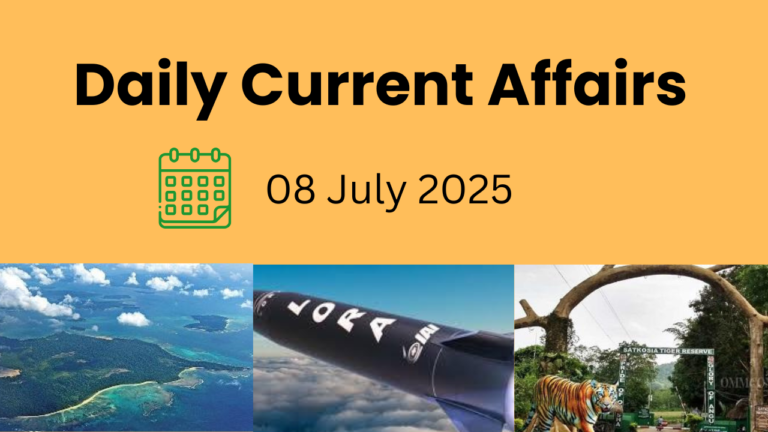1. Sharp Decline in Birth Rates in Tamil Nadu, Kerala, and Delhi: Twice the National Average
Context: Recent data from the Sample Registration System (SRS) Statistical Report 2021, released by the Registrar General of India, reveals a stark divergence in birth rate trends across Indian states. Notably, Tamil Nadu, Kerala, and Delhi are witnessing a decline in birth rates at twice the pace of the national average, signaling an accelerating demographic transition in these regions.
Understanding the Crude Birth Rate (CBR):
The Crude Birth Rate (CBR) refers to the number of live births per 1,000 individuals in a population within a year. It is a crucial metric in assessing population growth and planning public resources.
Key Findings of the Report:
- India’s Total Fertility Rate (TFR) in 2021 remained steady at 2.0, the same as in 2020.
A TFR of 2.1 is considered the replacement level, needed to maintain population stability. - The national crude birth rate in 2021 was 19.3 per 1,000, declining annually by 1.12% from 2016 to 2021.
- In comparison, birth rates declined much faster in:
- Tamil Nadu: ↓ 2.35% annually
- Delhi: ↓ 2.23% annually
- Kerala: ↓ 2.05% annually
- Other states with faster-than-average declines include:
- Maharashtra (1.57%), Gujarat (1.24%), Odisha (1.34%), Himachal Pradesh (1.29%), Haryana (1.21%), and Jammu & Kashmir (1.47%).
- States with the slowest decline include:
- Rajasthan (0.48%), Bihar (0.86%), Chhattisgarh (0.98%), Jharkhand (0.98%), Assam (1.05%), Madhya Pradesh (1.05%), West Bengal (1.08%), and Uttar Pradesh (1.09%).
- Increase in registered births was noted in 11 states and UTs, including Bihar, Rajasthan, Uttar Pradesh, Uttarakhand, West Bengal, J&K, Ladakh, and several northeastern states.
Fertility and Reproduction Trends:
- TFR above national average was observed in Bihar, Uttar Pradesh, Rajasthan, and Madhya Pradesh, indicating sustained high fertility rates.
- Gross Reproduction Rate (GRR) for India stood at 1, meaning each woman is, on average, having one daughter who survives to reproductive age.
- States with higher GRR than the national average include Bihar, Rajasthan, MP, and UP, reflecting persistent high fertility.
Major Concerns:
- Uneven Demographic Transition: States such as Bihar, Uttar Pradesh, and Madhya Pradesh show a slow decline in birth rates, leading to regional population imbalances. This may result in strain on resources, infrastructure, and public services.
- North-South Population Divide: Southern and western states are nearing or falling below replacement fertility levels, while northern and eastern regions remain above, causing a “two-speed” demographic transition in the country.
- Aging Population in Low-Fertility States:
States like Kerala and West Bengal face the challenge of rapid aging, potentially leading to:
- Shrinking workforce
- Increased burden on healthcare and pensions
- Need for revised economic and social support systems
- High Fertility Persists in Underserved Regions: Despite a national TFR of 2.0, high fertility in Bihar (3.0) and Uttar Pradesh (2.7) points to gaps in education, healthcare, and awareness, especially in rural areas.
Way Forward: Policy Recommendations:
- Prepare for an Aging Society: Low-birth-rate states must prepare for elder care, pension reforms, and health infrastructure for the elderly.
Reduce Regional Inequalities:
- Invest in job creation, education, and infrastructure in high-growth states to balance national development.
Centre-State Collaboration:
- Ensure coordinated population policy efforts, with flexible funding mechanisms to support state-specific needs.
Conclusion: India’s demographic future is unfolding in two contrasting directions—with southern and western states stabilizing or shrinking, and northern and eastern states continuing to grow. Effective planning, inclusive policies, and data-driven decisions will be essential in navigating this complex population landscape.
2. Justice B.R. Gavai Takes Oath as the 52nd Chief Justice of India
Context: Justice Bhushan Ramkrishna Gavai was officially sworn in as the 52nd Chief Justice of India (CJI) on May 14, 2025. The oath was administered by President Droupadi Murmu at Rashtrapati Bhavan. Justice Gavai succeeds Justice D.Y. Chandrachud, and his appointment is notable not only for his legal acumen but also for his background—he is only the second Dalit to become the CJI, following Justice K.G. Balakrishnan.
Constitutional Basis for Appointment:
The Constitution of India provides the framework for the judiciary but does not specify a detailed procedure for the appointment of the Chief Justice of India.
- Article 124(1) states: “There shall be a Supreme Court of India consisting of a Chief Justice of India and other judges.”
- Article 124(2) authorizes the President to appoint Supreme Court judges, including the CJI.
- However, no formal mechanism or selection process is laid out in the Constitution for appointing the CJI.
Established Convention for Appointment:
In the absence of constitutional procedure, long-standing convention governs the appointment of the Chief Justice:
- The outgoing CJI recommends the name of the senior-most judge of the Supreme Court as their successor.
- Seniority is determined not by age but by the length of service in the Supreme Court.
- This convention of seniority has been consistently followed to maintain the independence and impartiality of the judiciary.
Eligibility Criteria for Appointment:
As per Article 124(3) of the Constitution, a person is qualified for appointment as a Supreme Court judge, and thereby as CJI, if they:
- Are a citizen of India; and
- Have been a High Court judge for at least five years, or
- Have been an advocate in a High Court for at least ten years, or
- Are deemed a distinguished jurist in the opinion of the President.
Tenure and Age of Retirement:
- The Chief Justice of India does not have a fixed tenure.
- All Supreme Court judges retire at the age of 65.
- Justice Gavai, born on November 24, 1960, is expected to serve as CJI for approximately six months, retiring in November 2025.
Removal Procedure for Chief Justice of India:
A Chief Justice or judge of the Supreme Court can be removed only through a rigorous impeachment process:
- As per Article 124(4) and the Judges (Inquiry) Act, 1968, removal requires:
- A motion in Parliament, supported by a special majority in both the Lok Sabha and Rajya Sabha.
- Grounds for removal include “proved misbehaviour or incapacity.”
- No Chief Justice of India has ever been successfully impeached.
Additional Facts: A Milestone in Representation
- Justice Gavai hails from Maharashtra and has served as a judge of the Bombay High Court before being elevated to the Supreme Court in 2019.
- His elevation is seen as a step toward greater diversity and inclusion in the higher judiciary.
- His legal career spans over three decades, and he is known for his judgments in constitutional law, criminal justice, and public interest litigation.
Looking Ahead:
Justice B.R. Gavai’s tenure, though brief, is expected to focus on:
- Speeding up judicial reforms
- Improving case disposal rates
- Promoting transparency and digitalisation in the justice delivery system
His appointment reaffirms the commitment to upholding constitutional values, judicial independence, and social inclusivity within India’s highest court.
3. India’s Major Ports Set New Benchmark in FY 2024-25
Context: India’s Major Ports have achieved a historic performance milestone in FY 2024-25, recording a cargo handling capacity of approximately 855 million tonnes, up from 819 million tonnes in the previous fiscal year. This marks an annual growth of 4.3%, showcasing the growing strength and modernization of India’s maritime sector.
Key Performance Highlights:
Boost in Operational Efficiency:
- Average Turnaround Time (TRT) for vessels has been reduced to 49.5 hours, a remarkable 48% improvement from 96 hours in FY 2014-15.
- The operating ratio improved significantly, falling from 64.7% to 42.3%, reflecting greater cost-effectiveness and optimized port operations.
Financial Growth:
- The total income of major ports has more than doubled over the past decade, recording a 7.5% CAGR (Compound Annual Growth Rate).
- This financial success is largely attributed to improved port operations and increased private sector involvement.
Private Sector Participation:
- Public-Private Partnership (PPP) investments have tripled, playing a crucial role in infrastructure upgrades, digitalisation, and innovation across ports.
India’s Maritime Sector: A Strategic Asset
- India has 13 Major Ports (under the central government) and 217 Non-Major Ports (managed by state governments).
- The sector is overseen by the Ministry of Ports, Shipping and Waterways.
- Located along some of the world’s busiest trade routes, India’s ports serve as a vital link in global maritime logistics.
Trade and Ranking:
- The sector handles 95% of India’s trade by volume and 70% by value.
- India’s position in the Global Port Performance Index improved from 54th in 2014 to 38th in 2023.
- Nine Indian ports now rank among the top 100 globally for performance and infrastructure.
Sectoral Growth and Strategic Vision:
Cargo Capacity Growth:
- From 2014-15 to 2023-24, major ports increased their annual cargo-handling capacity by over 87%.
Vision for 2035:
- India aims to invest US$ 82 billion in port infrastructure by 2035.
- Plans include establishing a national shipping company to add 1,000 ships over the next decade to expand fleet capacity and reduce dependence on foreign vessels.
Challenges Hindering Maritime Expansion:
Despite impressive growth, several structural and operational challenges persist:
- Infrastructure Gaps: Some ports still lack modern facilities, limiting potential throughput.
- Congestion: Heavy traffic at major ports causes delays and increases turnaround time.
- Environmental Issues: Emissions and pollution from port activities raise sustainability concerns.
- Inefficient Connectivity: Poor road and rail links hinder smooth cargo transportation.
- Security and Cyber Threats: Ports are vulnerable to smuggling, piracy, and cyberattacks due to inadequate security protocols.
Government Initiatives Driving Transformation:
Sagarmala Programme:
- Focuses on modernising port infrastructure, enhancing coastal economic zones, and improving port-road-rail connectivity.
- Provides financial support for coastal berths, fishing harbours, cruise terminals, and connectivity projects.
Maritime India Vision 2030 (MIV 2030):
- Aims to transform India into a top-10 global shipbuilding nation.
- Comprises 150+ initiatives across sectors like port modernization, shipbuilding, skill development, and logistics.
Inland Waterways Development: 26 new national waterways have been added to promote sustainable and cost-effective transport.
Green Tug Transition Program (GTTP): Targets 100% transition to eco-friendly fuel-based harbour tugs by 2040 to reduce carbon emissions and support the green port initiative.
Sagarmanthan Dialogue: An annual strategic platform positioning India as a global maritime thought leader, bringing together policymakers, industry experts, and academia.
Financial Incentives and Support:
- Maritime Development Fund worth 25,000 crore launched for long-term investment in ports and shipping.
- Shipbuilding Financial Assistance Policy (SBFAP 2.0) upgraded to make Indian shipyards globally competitive.
The Road Ahead:
India’s maritime sector is poised for a new era of global leadership, driven by:
- Continued mechanisation and digitalisation of port processes.
- Expansion of multi-modal logistics hubs for seamless cargo flow.
- Promotion of green and sustainable practices to meet global environmental standards.
Conclusion: FY 2024-25 stands as a landmark year for India’s port sector—defined by record-breaking performance, global recognition, and forward-looking reforms. With strategic investments and a strong policy push, India is on course to become a leading maritime power in the coming decades.
4. India’s Bold Leap into 6G Technology
Context: India has marked a significant milestone in global telecom leadership. At the Bharat 6G International Conference, the Union Minister of State for Communications announced that India is now among the top six countries worldwide in filing patents related to 6G technology — a testament to its rising stature in the high-tech innovation ecosystem.
India’s Rising Leadership in 6G Research:
India’s 6G push is backed by strategic investments, global partnerships, and deep research capabilities:
- Over 111 government-funded R&D projects with a total value exceeding 300 crore.
- International collaborations with tech-advanced nations like Japan, Finland, and Singapore to co-develop cutting-edge solutions.
- Breakthroughs in terahertz communication, AI-native networks, and intelligent infrastructure.
- The economic potential of 6G is immense—expected to contribute up to US$1 trillion (~85 lakh crore) to India’s economy by 2035.
Bharat 6G Vision: A Roadmap to Digital Leadership
The Bharat 6G Vision, launched by the Government of India, envisions a globally competitive, inclusive, and secure digital future.
Strategic Goals:
- Position India as a leader in 6G technology by 2030.
- Ensure affordable and scalable access to 6G networks.
- Bridge the digital divide and promote equitable development across all regions.
Two-Phase Development Approach:
- R&D Phase (2023–2025): Focused on core technology development, network architecture design, and pilot testing.
- Deployment Phase (2025–2030): Aims for large-scale rollout, with integration into national digital infrastructure and support for new-age industries.
What 6G Brings to the Future:
6G is not just an upgrade—it’s a revolution:
- Sub-millisecond latency: Enabling real-time control for critical applications like remote surgery and autonomous vehicles.
- AI-native and self-healing networks: Offering adaptive and intelligent infrastructure.
- Volumetric Connectivity: Extending networks beyond earth to underwater and aerospace realms.
- Terahertz Band Communication: Allowing ultra-high-speed data transfer, thousands of times faster than 5G.
5G vs 6G: What’s the Difference?
| Feature | 5G | 6G |
| Peak Speed | 10 Gbps | 100 Gbps+ |
| Latency | ~1 ms | <0.1 ms |
| Network Intelligence | Limited AI | Fully AI-native |
| Coverage | Terrestrial | Air, Sea, Space |
| Use-Cases | Smart Cities, AR/VR | Holographic Telepresence, Digital Twins, Industrial Automation |
Technology Innovation Group on 6G (TIG-6G):
To shape India’s 6G trajectory, the Department of Telecommunications (DoT) has established the TIG-6G, which includes:
- Top industry players
- Premier academic institutions
- Leading research organizations
This body is responsible for drafting the national 6G roadmap and formulating policies to keep India at the forefront of telecom innovation.
Spectrum Allocation and Global Coordination:
India is actively participating in international regulatory efforts led by the International
Telecommunication Union (ITU). The IMT2030 initiative is studying frequency bands for global 6G use:
- 4400–4800 MHz
- 7125–8400 MHz
- 14.8–15.35 GHz
These bands are under evaluation for allocation at the World Radiocommunication Conference (WRC) in 2027.
India has also identified several frequency bands for IMT (International Mobile Telecommunications) services, including:
Industry Collaboration and the Bharat 6G Alliance:
To deepen collaboration and build a robust innovation ecosystem, India plans to launch the Bharat 6G Alliance (B6GA). This initiative will bring together:
- Startups and industry leaders
- Academic and research institutions
- Government and private sector stakeholders
B6GA aims to ensure that India’s 6G technologies are globally competitive, secure, and inclusive.
India’s Global 6G Journey: Looking Ahead
India’s push into 6G isn’t just about faster networks—it’s about shaping the future of digital civilization. With strategic vision, global collaboration, and grassroots innovation, India is poised to become a key driver of 6G development worldwide.
5. Plastic Menace in the Himalayas: A Growing Ecological Crisis
Context: The pristine Himalayan ecosystem is under increasing threat from plastic pollution, with a recent report revealing that over 84% of plastic waste collected in the region is non-recyclable, raising serious environmental and systemic red flags.
The Himalayan Cleanup 2024: Troubling Findings
The Himalayan Cleanup (THC) 2024, an extensive environmental audit conducted across nine Himalayan states, exposed alarming statistics:
- Over 1.2 lakh waste items were examined — 88% were plastic.
- 84.2% of the plastic waste was linked to food and beverage packaging.
- Shockingly, 71% of this packaging was non-recyclable, single-use plastic.
Top Polluters by Volume:
- Sikkim and Darjeeling (West Bengal) ranked highest.
- Followed by Ladakh, Nagaland, and Uttarakhand.
Environmental Impact of Plastic Waste in the Himalayas
Tourism-Driven Pollution:
- Plastic waste is concentrated around tourist hotspots, riverbanks, and protected areas.
- Unregulated tourism and lack of sustainable infrastructure amplify the crisis.
Threat to Climate and Biodiversity:
- Plastic degrades slowly, leading to soil and water contamination.
- Disrupts biodiversity, damages local agriculture, and threatens water sources.
Public Health Hazards:
- Improper disposal near habitations causes:
- Vector-borne diseases
- Water pollution
- Air toxicity from open burning of plastic
Systemic Challenges in Himalayan Waste Governance:
Lack of Infrastructure:
- Mountain villages and towns lack basic facilities for waste collection, segregation, and processing.
Weak Enforcement of Plastic Ban Policies:
- Despite state-level bans on single-use plastics, enforcement remains inconsistent and ineffective.
- Limited availability of eco-friendly alternatives discourages compliance.
Awareness and Responsibility Gaps:
- Tourists and local businesses are often unaware of their role in plastic pollution.
- Producers frequently ignore their obligations under Extended Producer Responsibility (EPR).
Topographical & Logistical Barriers:
- Remote terrain, dispersed settlements, and extreme weather conditions complicate waste management.
India’s Initiatives to Curb Plastic Pollution:
Extended Producer Responsibility (EPR):
- Mandates that producers and brand owners manage the lifecycle of plastic products, including post-use collection and recycling.
Plastic Waste Management Rules, 2022:
- Prohibits plastic bags below 120 microns in thickness.
- Aims to restrict manufacture, import, and sale of low-grade plastic products.
Swachh Bharat Abhiyan:
- The nationwide cleanliness campaign includes plastic waste collection and awareness drives.
Plastic Parks Scheme:
- Dedicated zones for plastic recycling and processing, promoting a circular economy approach.
The Way Forward: Towards Sustainable Waste Solutions
1. Mountain-Sensitive Waste Policies:
- Design policies that respect geographical, cultural, and ecological realities.
- Incentivize eco-alternatives suitable for cold and remote terrains.
2. Decentralized Waste Management:
- Promote community-led initiatives using traditional ecological knowledge.
- Set up low-cost, modular waste processing units across villages.
3. Eco-Friendly Tourism Practices:
- Implement mandatory waste audits at tourist sites.
- Enforce carry-in, carry-out policies, especially around pilgrimage routes and rivers.
Did You Know?
- Plastic takes 500–1,000 years to decompose in cold environments like the Himalayas.
- Microplastics have now been found in glacial meltwater, threatening Himalayan river systems that sustain over a billion people downstream.
India stands at a critical juncture to preserve the fragile Himalayan ecosystem. By combining policy innovation, community engagement, and eco-conscious tourism, the nation can lead by example in tackling mountain plastic pollution before it becomes irreversible.
6. Colombia Joins China’s Belt and Road Initiative
Context: China and Colombia have officially signed a Belt and Road cooperation pact, marking a significant step in strengthening diplomatic and economic ties between Asia’s largest economy and one of South America’s most strategically located nations.
This move aligns Colombia with China’s ambitious Belt and Road Initiative (BRI), a global infrastructure and investment strategy aimed at enhancing regional connectivity and trade across continents.
About Colombia: A Strategic South American Nation
Capital: Bogotá
Geographical Location:
Situated in the northwestern region of South America, Colombia enjoys a unique strategic position as the only South American country with coastlines on both the Caribbean Sea and the Pacific Ocean.
Political Borders:
Colombia shares its borders with:
- Panama to the northwest
- Ecuador and Peru to the south
- Venezuela to the east
- Brazil to the southeast
Geographical Highlights:
- The Andes Mountains stretch across its western territory, shaping much of its landscape and climate.
- The Amazon rainforest covers the southeastern regions, contributing to its rich biodiversity.
- Home to the Magdalena River, Colombia’s main waterway that supports inland trade.
Natural Wealth and Resources:
Colombia is endowed with a wealth of natural resources, making it an attractive partner for international trade and investment:
- Petroleum and natural gas
- Coal and iron ore
- Nickel, copper, and gold
- World-renowned for emeralds, with some of the finest quality stones globally
- Strong hydropower potential, providing over two-thirds of the country’s electricity
Why This Partnership Matters:
- Colombia’s inclusion in the BRI strengthens China’s economic footprint in Latin America, a region increasingly influenced by Chinese trade, finance, and infrastructure development.
- It opens up potential Chinese investment in Colombian infrastructure, energy, mining, and digital connectivity.
- Colombia could gain better access to Asian markets, advanced technology, and diversified development financing options.
Did You Know?
- Colombia is one of the world’s top five producers of emeralds, accounting for over 70% of global supply.
- The country has more bird species than any other nation, making it a global biodiversity hotspot.
This strategic cooperation under the Belt and Road Initiative is expected to enhance bilateral economic development, boost connectivity, and foster greater geopolitical alignment between China and Latin America.




